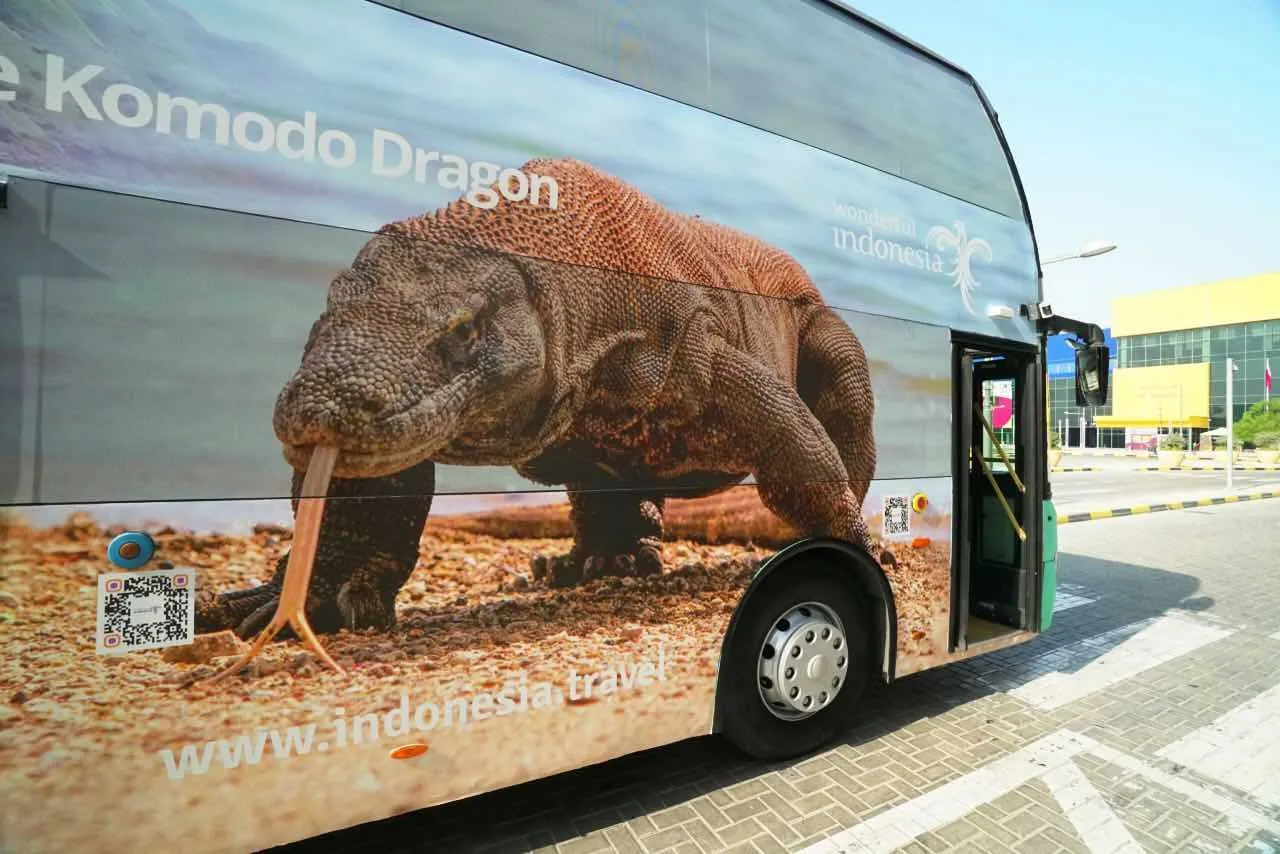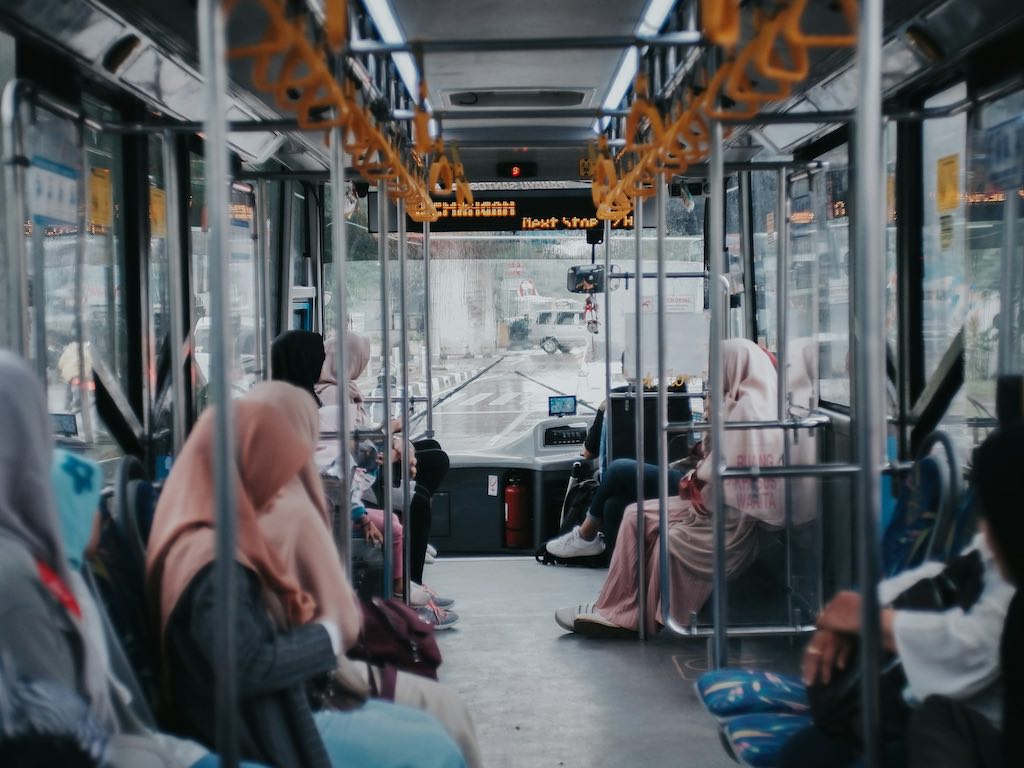
Friday, 18 Oct 2024

Jakarta, Indonesia's bustling capital, is home to millions of daily commuters navigating the city's extensive transit system. For advertisers, understanding commuter behavior is crucial to designing effective transit ad campaigns. In this article, we delve into the intricacies of Jakarta's commuter landscape, providing insights to help advertisers target their campaigns more effectively.
Jakarta's commuters are diverse, spanning various age groups, professions, and income levels. Key demographic segments include:
1. Young Professionals (Ages 22-35): Often tech-savvy and responsive to digital and interactive ads. They typically use public transport to commute to and from work.
2. Students (Ages 16-22): A significant portion of the commuter population, especially during school and university terms. They are receptive to ads related to education, technology, and entertainment.
3. Middle-aged Workers (Ages 35-50): This group includes a mix of blue-collar and white-collar workers, often with specific interests in family-oriented products and services.
4. Senior Citizens (Ages 60+): Though a smaller segment, they often use public transport during off-peak hours. Ads targeting health, wellness, and lifestyle products are effective for this group.
Understanding the daily flow of commuters is essential for ad placement. Key commuting patterns include:
1. Morning Rush (6 AM - 9 AM): A high volume of commuters heading to work or school. Ads displayed during this time should be concise and impactful, catering to the hurried nature of the audience.
2. Evening Rush (5 PM - 8 PM): Similar to the morning rush, but with a focus on winding down and leisure activities. Ads for restaurants, entertainment, and relaxation products perform well.
3. Off-Peak Hours (10 AM - 4 PM): A mix of students, senior citizens, and part-time workers. This period allows for more detailed ads, as commuters are generally less rushed.
Jakarta's transit system offers various modes of transport, each with its unique advertising opportunities:
1. TransJakarta Bus Rapid Transit (BRT): Widely used due to its extensive network and affordability. Ads on buses and at bus stops reach a broad audience, especially during peak hours.
2. Commuter Line Trains (KRL): Popular for longer commutes across Jakarta and neighboring regions. In-train and station ads are effective for capturing the attention of seated passengers.
3. Mass Rapid Transit (MRT): A newer addition to Jakarta's transit options, appealing to middle and upper-middle-class commuters. Digital screens and interactive ads in MRT stations provide high engagement rates.
4. Light Rail Transit (LRT): Currently expanding, the LRT system offers opportunities for early adopters to capture commuter attention.
Beyond demographics, psychographics play a crucial role in targeting ads effectively. Key interests among Jakarta's commuters include:
1. Technology and Gadgets: Especially among younger commuters and professionals. Ads for the latest smartphones, apps, and gadgets perform well.
2. Fashion and Lifestyle: A significant interest among young professionals and students. Ads for clothing brands, accessories, and lifestyle products are highly effective.
3. Food and Beverage: Popular across all age groups. Promoting new restaurants, cafes, and food delivery services can capture a broad audience.
4. Health and Wellness: Particularly relevant for middle-aged and senior commuters. Ads for health products, fitness centers, and wellness services resonate well.
Behavioral insights provide a deeper understanding of how commuters interact with transit ads:
1. Engagement with Digital Ads: Increasingly, commuters engage with digital and interactive ads. QR codes, social media integration, and mobile app promotions enhance engagement and trackability.
2. Attention Span: During peak hours, attention spans are shorter. Ads need to be visually striking and deliver the message quickly.
3. Repetition and Recall: Regular commuters often see the same ads multiple times. Ensuring consistency and repetition helps reinforce brand recall and message retention.
Strategic placement of ads ensures maximum visibility and impact. Considerations include:
1. High-Traffic Areas: Placing ads in high-traffic areas such as main transit hubs, busy intersections, and popular bus stops increases exposure.
2. Eye-Level Positioning: Ads placed at eye level are more likely to be noticed and read by commuters.
3. Interactive Elements: Incorporating interactive elements such as touchscreens, QR codes, and augmented reality features can enhance engagement and provide a memorable experience.
Understanding the diverse and dynamic nature of Jakarta's commuter population is key to creating effective transit ad campaigns. By considering demographics, commuting patterns, preferred modes of transport, psychographics, and behavioral insights, advertisers can strategically place ads to maximize visibility and engagement. As Jakarta's transit system continues to evolve, staying attuned to these insights will ensure that transit ads remain impactful and relevant.

Lestari Ads Agency - PT Lestari Dev Solusindo
Lestari Ads Agency is a leading out-of-home media company with the largest network in Indonesia. Lestari Ads Agency aims to create an inspiring journey by building the most effective, accessible and innovative data and advertising ecosystem, thus revolutionizing the way companies connect with their audiences. Lestari Ads has brightened up Indonesia's main streets and points of interest with LED Digital, traditional and iconic high-quality transit ads. We focus on providing impactful, innovative, effective and accessible advertising space.
The most trusted OOH advertising agency in Indonesia
Experience the top of visibility with Indonesia's leading out-of-home (OOH) advertising agency. We specialize in turning the urban landscape into a dynamic canvas for your brand, crafting compelling narratives that capture the imagination of millions. Our mastery over strategic placements and innovative formats ensures your message not only reaches, but resonates with a diverse and expansive audience. With a proven track record of delivering high-impact campaigns across Indonesia's bustling cities and beyond, we redefine what's possible in OOH advertising.
Find the best quality billboard advertising space with variety of size and dimension
out-of-home advertising, digital billboards, traditional billboards, transit advertising, street furniture advertising, outdoor signage, digital ooh, led billboards, static billboards, large format advertising, advertising displays, ooh media, advertising billboards, outdoor digital screens, urban advertising, roadside billboards, digital signage, retail advertising, poster advertising, mobile billboard advertising, digital transit ads, interactive ooh, airport advertising, mall advertising, cinema advertising, sports venue advertising, digital outdoor advertising, public transportation ads, taxi advertising, bus shelter ads, pedestrian advertising, advertising kiosks, outdoor media solutions, billboard marketing, ooh advertising strategies, ooh media planning, digital billboard solutions, smart billboard advertising, contextual ooh ads, geotargeted ooh ads, location-based ooh, smart outdoor ads, programmatic ooh, data-driven ooh, brand awareness billboards, large-scale ooh campaigns, outdoor advertising effectiveness, billboard design, high-traffic billboard locations, hyperlocal ooh, street-level ooh, public transit advertising, ooh campaign management, outdoor digital displays, media buyers ooh, roadside digital ads, metro station advertising, shopping center ads, ooh advertising trends, outdoor media buying, bus wrap advertising, illuminated billboards, building wrap advertising, branded outdoor advertising, billboard networks, freeway advertising, expressway billboards, train station advertising, out-of-home advertising campaigns, event-based ooh ads, ooh media buying strategies, proximity-based ooh, national ooh campaigns, city-wide ooh advertising, large-scale outdoor campaigns, integrated ooh solutions, ooh digital networks, smart city advertising, mobile billboard solutions, dynamic outdoor ads, highway billboard advertising, ooh media optimization, digital out-of-home screens, high-impact ooh ads, retail digital signage, interactive billboard advertising, regional ooh advertising, local outdoor advertising, consumer engagement ooh, brand visibility outdoor ads, targeted billboard advertising, digital advertising screens, urban billboard advertising, weather-triggered ooh ads, motion sensor billboards, flexible ooh solutions, sustainable outdoor advertising, renewable energy billboards, solar-powered billboards, ooh for small businesses, outdoor brand activations.
Frequently Ask Questions
About Us

